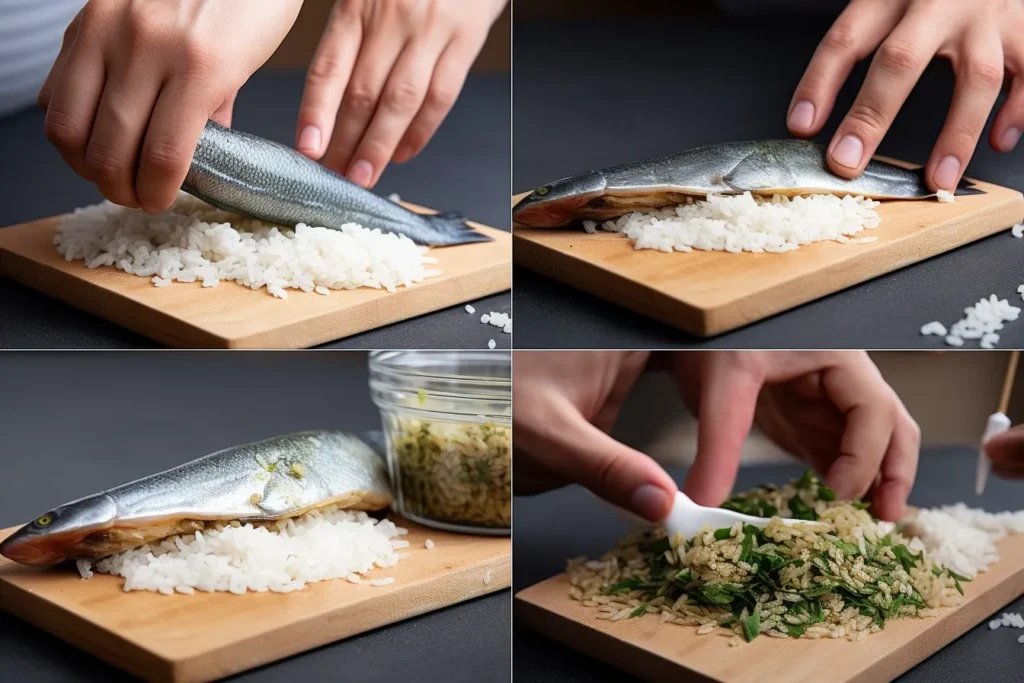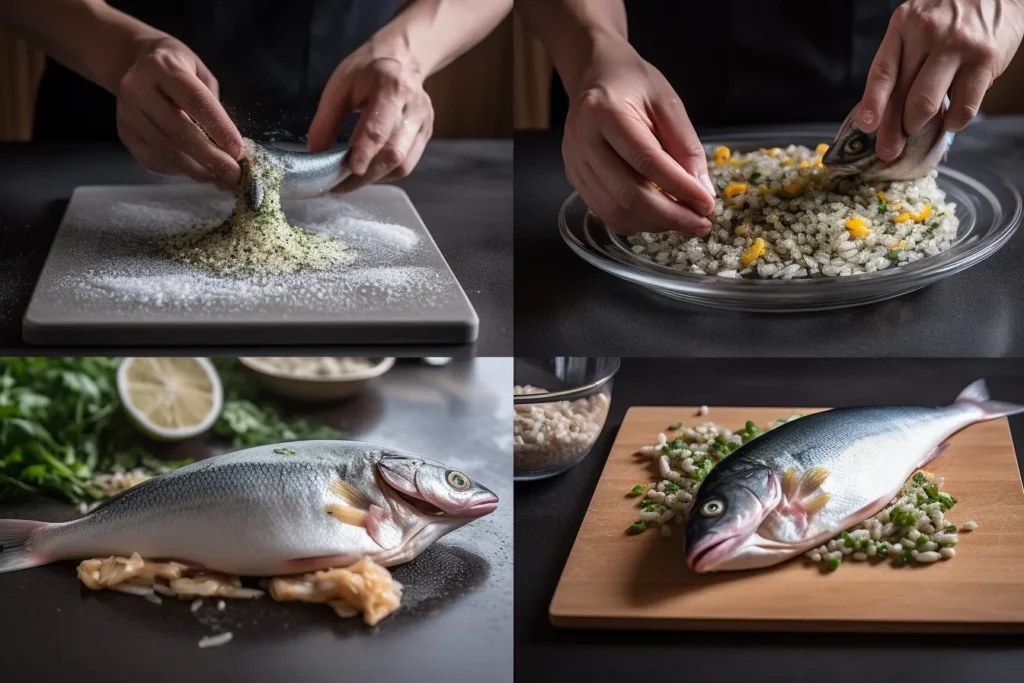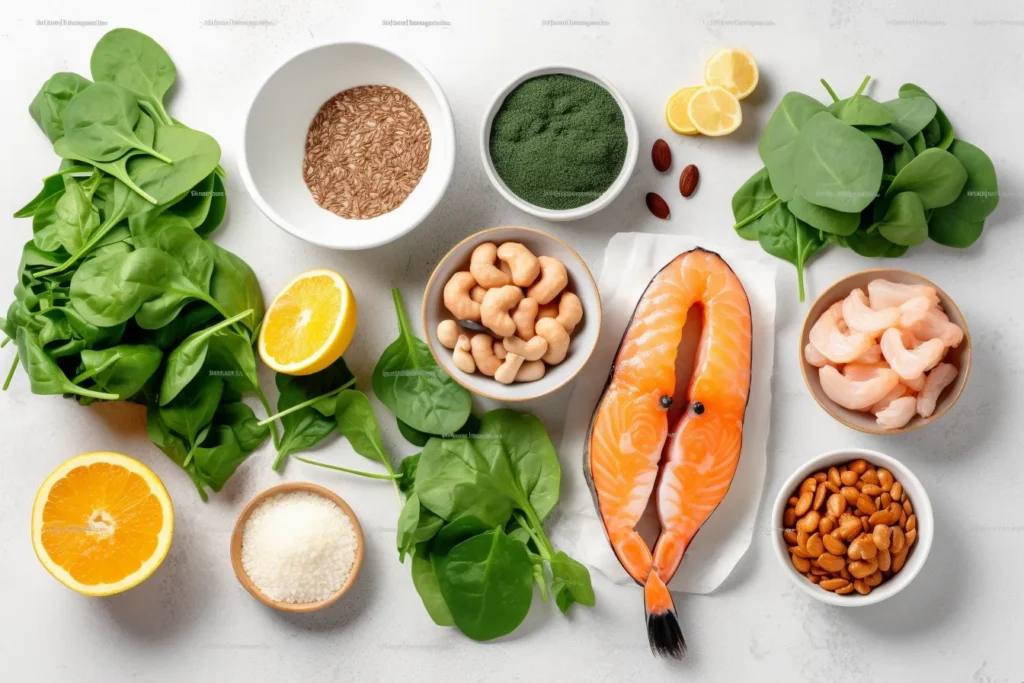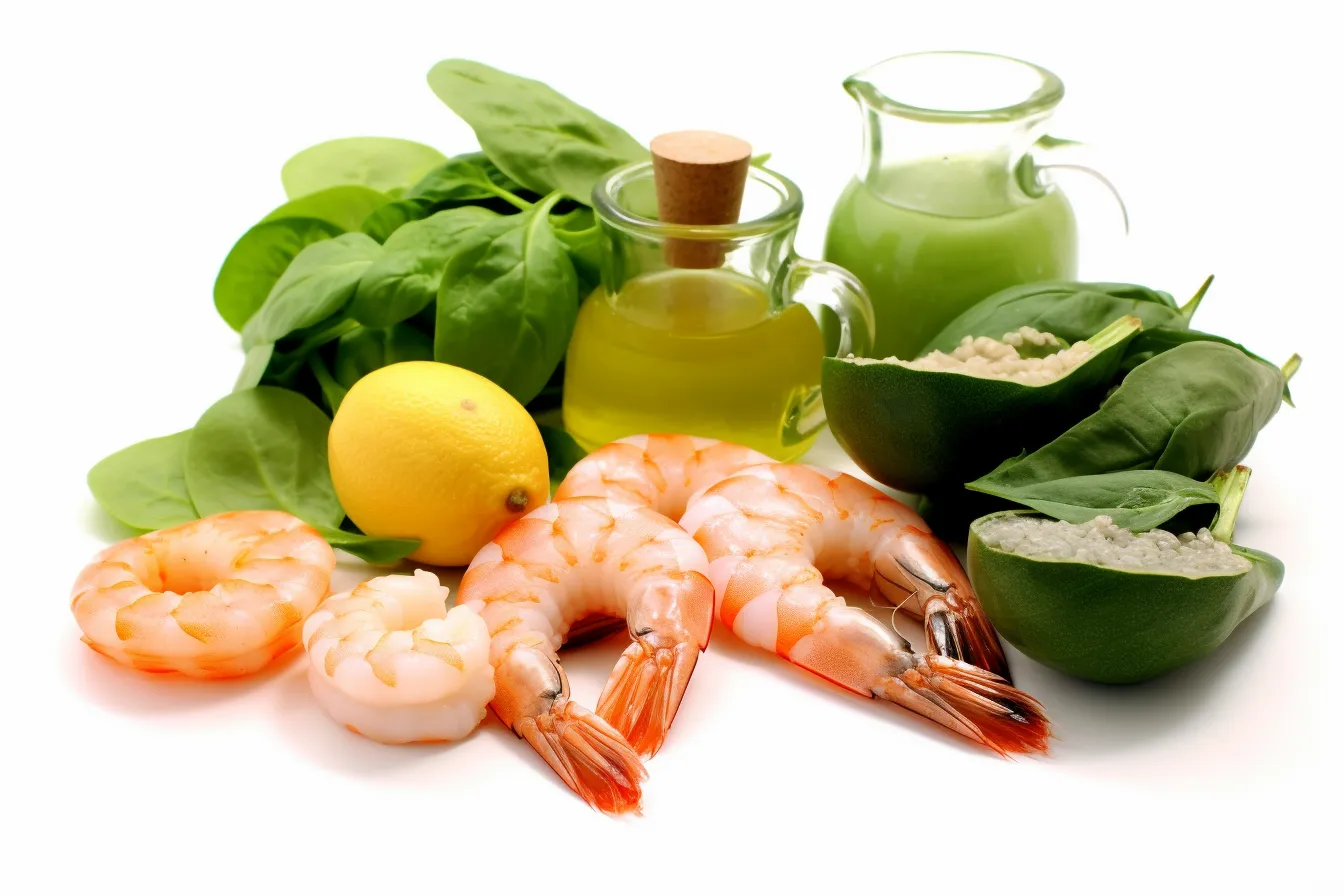Table of contents
What Are Alternative Ingredients for Fish Food? A Simple Guide
Taking care of fish means giving them the right food for their health and growth. But what if regular fish food is hard to find or costs too much? That’s when alternative ingredients for fish food can help. These options are affordable, easy to find, and still provide the nutrition fish need to stay healthy.
Many people wonder what are alternative ingredients for fish food when they want to save money, use natural ingredients, or explore homemade options. It’s good to know that these alternatives can work just as well as store-bought food. Even better, they can be healthier for your fish.
Why Consider Alternative Ingredients for Fish Food?
Today, more people are looking for better ways to feed their fish. Store-bought fish food, while convenient, sometimes contains fillers and preservatives that add no real value. Some fish owners notice their fish do not grow well or stay healthy on regular fish food.
This is why alternative options are so popular. These ingredients include protein-rich foods like insects or worms, as well as vegetables and grains. They can replace commercial fish food and still meet your fish’s needs.
Who Benefits From Fish Food Alternatives?
These options work for:
- Home Fish Owners: Those who keep fish in tanks or backyard ponds.
- Fish Breeders: People raising fish on a large scale.
- Eco-Friendly Owners: Those who prefer natural or homemade diets.
By using alternative ingredients, you can save money and feed your fish the best possible diet.

What Nutrients Do Fish Need?
Like all animals, fish need a mix of protein, fats, vitamins, and minerals to stay healthy. The good news is that you can provide all these nutrients with simple, natural ingredients:
- Protein: Insects like mealworms and earthworms are excellent choices.
- Vegetables: Foods like spinach, zucchini, and peas offer essential vitamins and fiber.
- Carbs: Oats, rice, and grains supply energy.
- Healthy Fats: Flaxseeds or egg yolks add the right fats for growth.
Switching to alternative ingredients does not mean you are giving up on quality. Instead, you can give your fish fresh, nutritious food that mimics what they would eat in the wild.
What Will You Learn From This Guide?
In this guide, we will show you:
- The best alternative fish food ingredients.
- How to prepare them easily at home.
- Tips to keep your fish diet balanced and nutritious.
By the end, you will know what are alternative ingredients for fish food and how to use them in simple, effective ways. Your fish will stay happy, healthy, and active.
Ingredients for Alternative Fish Food
When it comes to feeding your fish, finding the right ingredients is essential for their health and growth. Fortunately, there are many alternatives to commercial fish food that are natural, nutritious, and easy to source. Whether you are looking for protein, vitamins, or healthy fats, these ingredients offer everything your fish need to thrive. Let’s break these down into categories, so you know exactly what to use.
1. Protein-Rich Ingredients
Fish require a good amount of protein to grow and stay active. In fact, protein is one of the most important nutrients in a fish’s diet. Instead of using processed pellets, you can provide protein through natural alternatives.
- Insects and Worms: Insects like crickets, mealworms, and earthworms are excellent protein sources. They mimic the natural food fish would eat in the wild. For example, dried mealworms are widely available and easy to store.
- Egg Yolks: Egg yolks are soft, easy to digest, and rich in protein. You can boil an egg, mash the yolk, and feed it in small amounts.
- Shrimp and Fish Pieces: If you have leftover shrimp or fish, you can chop them into small pieces and feed them to your fish. This is particularly useful for carnivorous fish species.
To ensure variety, rotate these protein sources regularly. This way, your fish won’t get bored, and they will receive all the essential amino acids they need.
2. Plant-Based Ingredients
In addition to protein, fish also benefit from plant-based nutrients. Vegetables are a fantastic source of vitamins, minerals, and fiber. Furthermore, plant-based foods can help improve digestion and overall health.
- Leafy Greens: Spinach, kale, and lettuce are excellent choices. Simply blanch them in hot water for a few seconds to make them soft and easier for fish to eat.
- Peas: Peas are packed with vitamins and fiber. Remove the skins and mash them before feeding. This helps prevent digestive issues.
- Zucchini and Cucumber: Both zucchini and cucumber can be cut into thin slices and placed in the tank. They are especially popular with herbivorous fish.
If you have algae eaters, these vegetables are perfect alternatives to store-bought algae wafers. Moreover, they are inexpensive and easy to prepare.
3. Carbohydrate Sources
While protein and vitamins are critical, fish also need energy. Carbohydrates provide this energy and can be found in several natural ingredients. However, you should feed carbs in moderation to avoid overloading their diet.
- Rice: Cooked rice is a simple and affordable option. Make sure it is soft and not seasoned before adding it to the tank.
- Oatmeal: Plain, cooked oats are another great choice. They are high in energy and easy for fish to consume.
- Potatoes: Boiled potatoes can be mashed and offered to fish in small quantities. They provide a boost of energy without causing digestion issues.
By rotating carbohydrate sources, you ensure that your fish receive the right balance of nutrients. Additionally, it helps keep their meals interesting and varied.
4. Healthy Fats and Oils
Fats are important for energy, growth, and overall fish health. Including healthy fats in their diet will make their scales shiny and help them stay active.
- Flaxseed: Flaxseed is a fantastic source of omega-3 fatty acids, which are essential for fish growth. You can sprinkle ground flaxseed into their food.
- Fish Oil: A small amount of fish oil can be added to homemade fish food to improve its nutritional value. It also mimics the fats fish would naturally get in the wild.
- Egg Yolks: As mentioned earlier, egg yolks are not only high in protein but also contain healthy fats that support growth.
By including healthy fats in the diet, your fish will maintain their energy levels and improve their overall appearance.
5. Supplements and Add-Ins
Sometimes, fish need an extra boost of nutrients. Adding supplements to their food can make a big difference in their health.
- Spirulina: Spirulina is a nutrient-dense algae that is high in protein, vitamins, and minerals. It is especially good for herbivorous fish.
- Garlic: Adding small amounts of garlic to homemade fish food can boost immunity and improve digestion. Simply crush a clove and mix it in.
- Calcium Powder: Calcium helps with bone and scale development. A pinch of calcium powder can be sprinkled into their food mix.
These supplements ensure that your fish get all the nutrients they need to stay strong and active. Additionally, they are easy to find and can be mixed with other ingredients.
Tips for Using Alternative Ingredients
Now that you know the ingredients, here are a few tips to get the best results:
- Always Chop or Mash the Food: Fish have small mouths, so food should be cut into tiny pieces.
- Don’t Overfeed: Feed only as much as your fish can eat in 2-3 minutes to avoid tank contamination.
- Vary the Diet: Combine protein, vegetables, and carbs to give your fish a balanced meal.
- Blanch Vegetables: Softening vegetables makes them easier for fish to eat and digest.
By using these natural alternatives, you not only save money but also provide your fish with a healthier and more natural diet.

Preparation of Alternative Fish Food
Once you’ve gathered the ingredients, it’s time to prepare them properly. A well-prepared fish food mix ensures your fish receive all the essential nutrients they need without any risks. Follow these simple steps to make nutritious and balanced homemade fish food.
Step 1: Gather and Organize Ingredients
Start by selecting ingredients based on your fish’s dietary needs. Combine protein sources, vegetables, healthy fats, and optional supplements. For example:
- Proteins: Mealworms, earthworms, or shrimp pieces.
- Vegetables: Blanched spinach, zucchini, or peas.
- Carbs: Cooked rice or oatmeal.
- Healthy Fats: Ground flaxseed or a few drops of fish oil.
- Supplements: A pinch of spirulina or crushed garlic.
Having all your ingredients organized will make the preparation process faster and smoother.
Step 2: Prepare Protein Sources
Proteins form the base of your fish food. For live insects or worms, ensure they are clean and free of chemicals. If you’re using shrimp or fish pieces, chop them into small, bite-sized chunks. For egg yolks, boil an egg and mash the yolk thoroughly so it blends well with other ingredients.
Step 3: Blanch Vegetables
Vegetables such as spinach, peas, and zucchini need to be softened to make them easier for fish to eat. Blanching is a simple process:
- Boil water and place the vegetables in it for 30–60 seconds.
- Remove the vegetables and place them in cold water to stop the cooking process.
- Chop or mash the vegetables into small, manageable pieces.
Blanching preserves nutrients while making the vegetables soft enough for fish to digest.
Step 4: Mix Ingredients
Once all the ingredients are prepared, mix them together thoroughly. You can use a food processor for a finer texture or leave small chunks if your fish prefer larger pieces. Add a small amount of water or fish oil to bind the mixture. If you are including supplements like spirulina or garlic, sprinkle them in during this step.
Step 5: Shape and Store the Fish Food
After mixing, you can shape the fish food into small pellets, cubes, or thin sheets, depending on your fish species.
- Pellets: Roll the mixture into small, round shapes.
- Cubes: Flatten the mixture in a tray and cut it into small squares.
- Thin Strips: Use a piping bag or spoon to form thin lines of food.
To store homemade fish food:
- Place the prepared pieces on a tray and freeze them until firm.
- Once frozen, transfer them to an airtight container or resealable bag.
- Label the container with the date and ingredients to keep track.
Homemade fish food can last up to 3 months in the freezer when stored properly.
Tip: Always test new fish food in small amounts before fully switching. This helps you see if your fish enjoy the food and ensures there are no digestion issues.
Step 6: Feeding Your Fish
When it’s time to feed, take a small portion of the homemade food from the freezer and let it thaw for a minute. Only feed as much as your fish can eat within 2–3 minutes. Overfeeding can cause uneaten food to settle in the tank and impact water quality.
For herbivorous fish, you can occasionally add fresh slices of cucumber or zucchini into the tank. Remove any uneaten portions after a few hours to keep the tank clean.
By following these steps, you can easily prepare nutritious and balanced fish food at home. Not only will this save money, but it also gives you control over the quality of your fish’s diet.

Cooking and Serving Table for Alternative Fish Food
While preparing fish food doesn’t always require cooking, certain steps—like blanching vegetables, boiling eggs, or mixing ingredients—help improve both quality and digestibility. Below is a clear serving guide with preparation methods and portion sizes to ensure your fish get the right amount of nutrition.
Cooking Methods
| Ingredient | Preparation Method | Fish Type |
|---|---|---|
| Egg Yolk | Boil an egg, mash the yolk into a soft paste | All fish types (omnivores) |
| Spinach/Kale | Blanch for 30–60 seconds, chop into small pieces | Herbivores and omnivores |
| Peas | Boil for 2 minutes, remove skins, mash | Herbivores, goldfish, tetras |
| Zucchini/Cucumber | Slice into thin rounds; blanch briefly if preferred | Herbivores, algae eaters |
| Insects (mealworms) | Feed live, dried, or freeze-dried | Carnivores, omnivores |
| Shrimp/Fish Meat | Boil or steam lightly; chop into bite-sized pieces | Carnivores, cichlids, bettas |
| Oatmeal/Rice | Cook plain, cool, and serve in small portions | Omnivores |
How Much to Feed Your Fish?
When it comes to serving size, it’s important not to overfeed. Fish have small stomachs and can only eat what they consume within a few minutes.
- Feed Small Portions: Offer only as much as your fish can finish in 2–3 minutes.
- Start with Less: If you’re introducing homemade food, begin with a smaller portion and adjust as needed.
- Frequency: Most fish do well with feeding once or twice a day. Herbivores may require smaller, more frequent feedings.
Tip: Overfeeding causes leftover food to sink and decay, which reduces water quality. Always monitor your fish during feeding and remove uneaten food promptly.

Quick Serving Guide Based on Fish Type
| Fish Type | Preferred Ingredients | Feeding Frequency |
|---|---|---|
| Goldfish | Blanched peas, spinach, rice | 2 times a day |
| Betta Fish | Insects, shrimp pieces, egg yolk | 1–2 times a day |
| Algae Eaters | Zucchini, cucumber, leafy greens | 2–3 small feedings daily |
| Carnivorous Fish | Mealworms, earthworms, shrimp, fish meat | 1–2 times a day |
| Herbivores | Blanched veggies, spirulina, algae | 2–3 times a day |
Storing Homemade Fish Food
Proper storage is key to ensuring your homemade fish food stays fresh and nutritious. Follow these storage tips to maintain quality:
- Freezing: Freeze any leftover food in small portions, such as cubes or pellets. Use airtight containers to avoid freezer burn.
- Labeling: Mark the date on the container to track freshness. Homemade fish food lasts up to 3 months in the freezer.
- Thaw Before Feeding: Take small amounts out of the freezer and allow them to thaw before adding to the tank.
Tip: Always prepare fish food in small batches to ensure freshness. Avoid storing large quantities for too long, as the nutritional value may decrease over time.
By following these guidelines, you can create a safe, healthy, and balanced feeding schedule for your fish. Cooking and serving alternative fish food is simple, cost-effective, and ensures that your fish get the nutrients they need to stay happy and healthy.
Nutritional Analysis of Alternative Fish Food
Providing alternative fish food ensures a balanced diet for your fish, offering all the essential nutrients they need to stay healthy and thrive. Let’s break down the key nutritional components found in these natural alternatives and understand their benefits.
Key Nutrients in Alternative Fish Food
- Proteins
- Protein is critical for growth, energy, and muscle development in fish.
- Sources: Insects (mealworms, earthworms), egg yolks, shrimp, and fish meat.
- Benefit: A high-protein diet supports the rapid growth of carnivorous and omnivorous fish, like bettas and cichlids.
- Vitamins and Minerals
- Vitamins and minerals support immune function, bone health, and vibrant coloring in fish.
- Sources: Spinach (Vitamin A and calcium), peas (fiber and Vitamin C), zucchini, and spirulina (minerals and antioxidants).
- Benefit: These nutrients improve the overall vitality and longevity of herbivorous fish.
- Healthy Fats
- Fats provide energy and support the development of healthy scales and skin.
- Sources: Fish oil, flaxseed, and egg yolks.
- Benefit: Omega-3 fatty acids boost immunity and enhance fish coloration.
- Carbohydrates
- Carbs offer an energy source for active fish, but they should be fed in moderation.
- Sources: Cooked rice, oats, and mashed potatoes.
- Benefit: They help maintain energy levels, particularly for omnivorous fish.
Tip: When preparing fish food, always balance proteins, fats, and plant-based nutrients. Too much of one nutrient can lead to health issues. For instance, excess protein can cause bloating, while too many carbs may reduce digestion efficiency.
Nutritional Table
Here’s a sample breakdown of the nutritional value of a balanced homemade fish food mix:
| Nutrient | Source | Benefits |
|---|---|---|
| Protein | Mealworms, shrimp, egg yolk | Supports growth and energy |
| Vitamins (A, C, E) | Spinach, peas, spirulina | Enhances immunity and improves coloring |
| Healthy Fats | Fish oil, flaxseed, egg yolk | Boosts skin health and scale development |
| Fiber | Blanched vegetables, peas | Aids digestion and prevents bloating |
| Carbohydrates | Rice, oats, potatoes | Provides energy for active fish |
| Minerals | Spirulina, spinach, calcium | Supports bone and scale growth |
Health Benefits of Alternative Ingredients
Switching to alternative fish food has several health advantages for your aquatic pets:
- Improved Digestion: Fresh vegetables and fibers help prevent constipation and bloating in fish.
- Enhanced Growth: Protein-packed foods like insects and shrimp ensure healthy growth and activity.
- Vibrant Coloring: Vitamins and antioxidants from spirulina and leafy greens boost the natural colors of fish.
- Stronger Immunity: Garlic and omega-3 fatty acids help fish fight infections and stay resilient.
By customizing the mix of nutrients, you ensure your fish remain active, healthy, and thriving in their environment.
Tip: Regularly check your fish for signs of malnutrition, such as lethargy, faded colors, or reduced appetite. If these occur, adjust their diet to include more protein, vitamins, or healthy fats.
Providing a nutritional balance through alternative fish food doesn’t just save money—it creates a healthier, more natural feeding option for your aquatic pets. With the right mix of proteins, vitamins, and carbs, you can mimic their natural diet and enhance their overall well-being.
Conclusion: Alternative Ingredients for Fish Food
In conclusion, exploring alternative ingredients for fish food is a practical, cost-effective, and sustainable approach to ensuring your fish thrive. By using natural proteins, plant-based options, and healthy fats, you can provide a well-rounded, nutritious diet that mirrors what fish consume in their natural habitats.
Transitioning to homemade alternatives not only helps you save money but also gives you full control over the quality of the food your fish receive. For instance, protein sources like mealworms and shrimp support growth, while vegetables such as spinach and peas offer essential vitamins and minerals. Additionally, healthy fats like flaxseed and fish oil enhance your fish’s energy and overall health.
Furthermore, adopting this method reduces your reliance on commercial fish food, which often contains fillers or additives. This means you can feed your fish healthier options while reducing environmental waste—a win-win situation for both your pets and the planet.
Key Takeaways
- Use proteins (like shrimp or mealworms) to support muscle growth.
- Incorporate vegetables (such as spinach or zucchini) for vitamins and fiber.
- Add healthy fats (like fish oil or flaxseed) to enhance fish energy and appearance.
- Store homemade food properly to maintain freshness and avoid waste.
Tip: Start with small portions of homemade fish food to observe how your fish respond. Gradually adjust the mix of ingredients based on their needs and preferences.
Ultimately, providing alternative fish food ensures your fish stay healthy, active, and vibrant. By following the steps outlined in this guide, you can create customized, nutritious meals that benefit both your fish and your wallet. Start experimenting with ingredients today, and watch your fish flourish!
Thank you for reading, and happy feeding!


